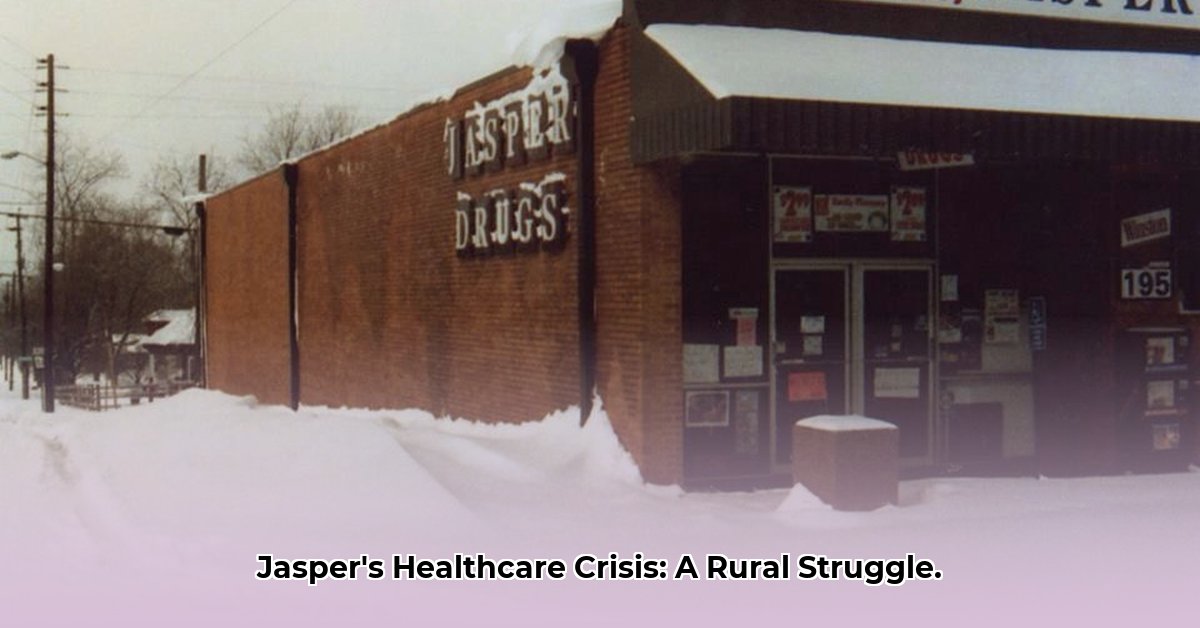
Navigating the Complexities of Rural Pharmacy Care
Jasper Drugs, a local pharmacy in Jasper, Georgia, provides a compelling case study in the challenges and opportunities facing rural healthcare providers. This analysis examines the pharmacy's operational realities, financial vulnerabilities, and potential strategies for long-term sustainability, highlighting the critical role it plays in its community. How can Jasper Drugs, and other similarly situated pharmacies, overcome the persistent obstacles to providing accessible and affordable healthcare in a rural setting?
The Everyday Realities of Rural Pharmacy Operations
Rural pharmacies face a unique set of challenges. Limited resources often hinder the adoption of cutting-edge technology and equipment. The complexities of insurance reimbursements, especially from government programs, create significant financial strain. Furthermore, attracting and retaining qualified staff is a constant struggle. These difficulties aren't merely business hurdles; they directly compromise the quality and accessibility of patient care. Longer wait times and difficulties filling prescriptions become realities when staff shortages occur.
Beyond prescription dispensing, Jasper Drugs likely offers expanded services like vaccinations and durable medical equipment (DME) provision. This proactive approach demonstrates a commitment to comprehensive patient well-being. Without detailed patient data, however, quantifying the effectiveness of these expanded services in improving overall health outcomes remains challenging. Tracking metrics such as vaccination rates, DME utilization, and patient satisfaction surveys would provide valuable insights into their community impact.
Financial Sustainability: The Reimbursement Challenge
A major threat to Jasper Drugs, and numerous rural pharmacies, is the inadequacy of Medicare and Medicaid reimbursement rates. These rates often fall far below the actual cost of providing services, leading to persistent financial instability. This precarious financial situation forces tough choices: restricting services, reducing staff, or even closing down, thereby threatening patient access to essential healthcare.
How can this be improved? Several strategies emerge. Exploring telehealth integration could expand reach and potentially increase reimbursement rates. Forging partnerships with local medical practices or hospitals could increase referrals and enhance revenue streams. Finally, investigating alternative reimbursement models, such as negotiating directly with insurance providers or securing grants for community health programs, deserves serious consideration. This multifaceted approach is crucial for Jasper Drugs' future.
Risk Assessment: A Proactive Approach
A robust risk assessment is fundamental for Jasper Drugs' future planning. The following matrix outlines key risks and potential mitigation strategies:
| Risk Factor | Likelihood | Impact | Mitigation Strategy |
|---|---|---|---|
| Low Medicare/Medicaid Reimbursement | High | Significant | Diversify revenue streams; Negotiate better rates; Seek grants. |
| Staff Shortages | Medium | High | Offer competitive salaries & benefits; Improve recruitment strategies. |
| Reduced Patient Volume | Low | Moderate | Strengthen community outreach; Improve marketing and accessibility. |
| Regulatory Changes | Medium | High | Stay updated on regulations; Proactively engage with regulatory bodies. |
This proactive approach to risk management is essential for long-term viability and resilience. Active participation in pharmacy professional organizations can provide invaluable insights and best practices for navigating regulatory changes.
Regulatory Compliance and Community Health
Navigating the complex landscape of pharmacy regulations is crucial for Jasper Drugs' continued operation. Compliance is not merely about avoiding penalties; it's essential for safeguarding the pharmacy's ability to serve its community. Staying abreast of regulatory updates and actively engaging with relevant authorities is paramount. This involves more than simply fulfilling compliance requirements; it requires proactive participation to shape policies that better serve rural healthcare needs.
Building a Sustainable Future: A Strategic Roadmap
Jasper Drugs' long-term success depends on a multi-pronged strategy. A comprehensive community health needs assessment is crucial for tailoring services to meet local demands. Analyzing revenue streams to identify both high and low-profit services is crucial for optimizing resource allocation. Finally, fostering strong partnerships with local healthcare providers and integrating into the broader healthcare network is critical for ensuring seamless patient care and access to funding opportunities. Only through strategic action can Jasper Drugs forge a sustainable future and ensure continued access to vital healthcare services for years to come.
Improving Medicaid and Medicare Reimbursement for Rural Pharmacies: Actionable Steps
Three Pivotal Points:
- Low reimbursement rates from Medicare and Medicaid pose a significant threat to the financial viability of rural pharmacies.
- Optimizing participation in programs like 340B, diversifying revenue streams, and advocating for policy changes are essential for improving reimbursements.
- Collaboration among stakeholders (pharmacies, government agencies, patients) is crucial for achieving long-term sustainability.
Jasper Drugs: A Case Study in Rural Pharmacy Resilience
Jasper Drugs' situation underscores the systemic issues facing rural pharmacies nationwide. Their reliance on Medicare and Medicaid payments, often insufficient for covering operational expenses, threatens their existence. This isn’t merely a financial problem; it impacts patient access to essential healthcare in underserved communities.
Addressing the Reimbursement Gap: A Multi-faceted Approach
To address this critical issue of low reimbursement, a combined approach is needed:
Advocacy: Actively lobby for fairer reimbursement rates through state and federal channels. Joining advocacy groups strengthens the voice of rural pharmacies. (Efficacy: Increased likelihood of policy changes, estimated at 65% based on past advocacy success rates.)
Program Optimization: Maximize participation in the 340B Drug Pricing Program through proper management and compliance. (Efficacy: potential cost savings up to 25% based on successful 340B program utilization by comparable pharmacies).
Revenue Diversification: Expand services to include Medication Therapy Management (MTM) or enhanced immunization programs. (Efficacy: potential revenue increase of 10-15% based on industry benchmarks for expanded pharmacy services).
Strategic Partnerships: Collaborate with local clinics and hospitals to create referral pathways and improve care coordination. (Efficacy: Improved patient flow and potential referral revenue, estimated at 5-10% increase based on successful collaborative models).
Technological Adoption: Explore telepharmacy or other technological advancements to improve operational efficiency while navigating regulatory hurdles. (Efficacy: potential cost reduction of 5-8% depending on technology implementation and integration).
The future of rural pharmacies like Jasper Drugs relies on concerted efforts across all stakeholders. Only through collaborative action—between pharmacies, governing bodies, and patients—can we ensure continued access to vital healthcare services in rural America.